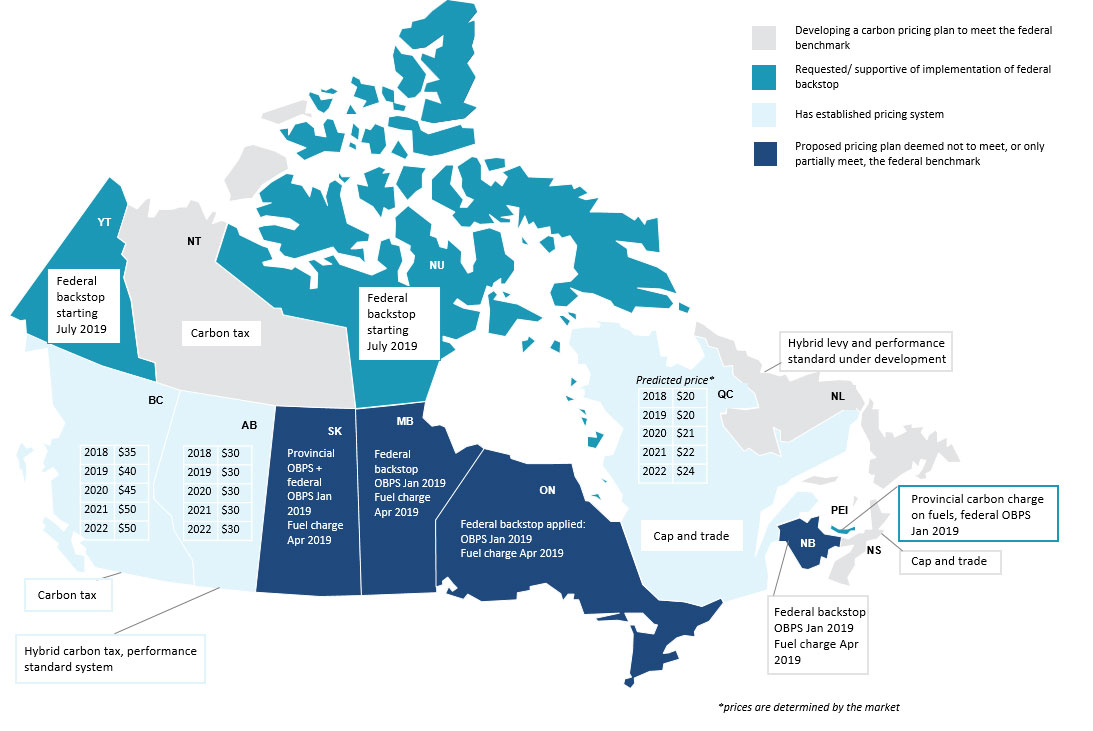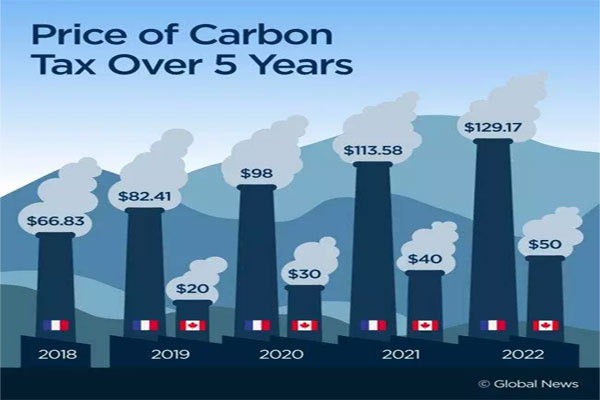As Canada’s 2019 Federal election looms closer, carbon pricing has shown itself to be a highly contested and divisive issue. Since the Federal Liberals announced their carbon pricing plan, it’s dominated the conversation surrounding climate change.
The NDP and Greens back the Federal Liberal’s proposal, whereas the Conservatives do not, meaning the issue has fallen down a left/right, partisan split.
Among experts, there’s a policy consensus that carbon pricing should play an integral role in moving the world towards decarbonization. Unfortunately, the political sphere is lagging behind, primarily due to Provincial and Federal Conservative resistance.
Since 2018, the Canadian public has gradually moved toward embracing carbon pricing, with more than 50 percent of Canadians voicing support for the Federal Liberal’s plan.
Due to the divisiveness of carbon pricing, there has been significantly less coverage paid to other focal points of reducing emissions. While carbon pricing represents an important aspect of a successful climate change plan, it must be accompanied by a host of other incentives, initiatives, and investments. Without a comprehensive plan, Canada won’t be able to meet the Paris Climate Accord targets, let alone become a global leader on climate change.

The Canadian government’s carbon price plan sets out a federal benchmark: a minimum of $20 per tonne of carbon, rising by $10 per year to $50 per tonne in 2022. The provinces and territories had the option to design their own equivalent or better carbon pricing system or adopt, in full or in part, the federal backstop: a carbon levy on fuels and an output-based pricing system (OBPS) for large emitting industrial facilities (Melissa Harris – Director of Policy, The Delphi Group).
In April of 2019, the Liberal’s carbon price officially came into effect. The initial price is $20/ton of carbon, rising annually by $10/ton until the price is $50/ton by 2022.
While the initial price of $20/ton is far too low to spur the kind of climate action needed to avoid a catastrophe, the annual price increase serves as a way of achieving a more impactful price, while offering markets the time to adjust to increased production costs. The carbon pricing leadership coalition estimates that for countries to meet their 2030 targets, a carbon price between $50-$100/ton must be established, barring other emission reduction policies.
This estimate is also made on the assumption that global emissions will not rise any higher.
Trudeau’s Liberals have been keen to claim that their carbon pricing plan will make Canada a global leader on climate change, but this is far from true. Canada currently leads the G7 nations in oil and gas subsidies, with an estimate of 3.3 billion dollars being given out in 2016 alone. This level of subsidizing works out to paying oil and gas producers roughly $19 per ton of carbon emitted.
Unfortunately, finding more recent figures on oil and gas subsidies is particularly challenging, as Canada has refused to publish documentation of the true costs of their subsidies. Out of the G7 nations, Canada currently sits in 6th place regarding transparency.
In 2017, the auditor general criticized Trudeau’s government for failing to provide information on inefficient fossil fuel subsidies. Subsidizing fossil fuels directly undermines carbon pricing, and has contributed to the slow progress Canada has made on developing more renewable energy.
Canada has also continued to develop fossil fuel infrastructures, such as the Trans Mountain pipeline expansion (TMX) or British Columbia’s liquified natural gas project (LNG). The impacts of massive subsidies combined with the continued development of fossil fuel infrastructure have left Canada’s climate policies significantly undermined, and the Paris Accord targets far from reach.
Although Trudeau’s government likes to tout carbon pricing as the solution to climate change, it’s clear that without substantial changes in subsidies and government investments, Canada will continue to be an environmental laggard. The greatest shortcoming of carbon pricing and similar emission reduction strategies has been the inadequate prices and targets being set. If Canada wants to provide subsidies and continue to develop fossil fuel projects, the carbon price must rise much higher than $50/ton by 2022. This is highly unlikely to occur however, as even the low price of $20/ton has caused a major political backlash.

Canada’s carbon tax would see a tax of $20 per tonne of emissions — that would rise by $10 a year until it reaches $50 per tonne.
The political struggle over carbon pricing comes at a crucial junction in history. Just last year, the intergovernmental panel on climate change (IPCC) reported that the world’s emission reduction targets aren’t ambitious enough. The Paris Climate Accord targets aim to keep warming below 2 degrees Celsius; however, the report published by the IPCC suggests 1.5 degrees as the warming threshold. At the current level of progress being achieved, Canada will inevitably miss the targets designed to keep warming below 2 degrees Celsius. Currently, Canada lacks the political will to raise the price of carbon to a sufficient degree.
That being said, this problem is not unique to Canada. The Organization for Economic Co-operation and Development (OECD) reports that the vast majority of countries enacting carbon prices are doing so at levels too low to significantly curb climate change.
While carbon pricing is an important step for long term decarbonization, there are plenty of strategies that work in tandem with carbon pricing to effectively reduce emissions.
First, eliminating fossil fuel subsidies and replacing them with renewable energy subsidies will provide industry incentives without undermining carbon pricing. This is an area Canada is particularly weak on, as Trudeau has continued his predecessor’s trend of providing minuscule funding for the renewable industry.
Carbon sinks, such as Canada’s boreal forest, are also critical in the fight against climate change. Per hectare, Canada’s boreal forest stores nearly twice as much carbon as tropical counterparts.
Redeveloping carbon sinks through reforestation is cheap, efficient and a critical tool in mitigating the impacts of climate change.
There are also certain social policies that can be implemented to help cut down emissions. Expanding public transit, lowering the cost, or making it free to use encourages reductions in transportation-related greenhouse gases (GHG), the second largest contributor in Canada. Increasing electric vehicle (EV) rebates and expanding charging stations are also successful ways of reducing GHG from the transportation sector. Creating more stringent energy efficiency standards in construction, and providing significant funding for retrofit programs can help reduce the amount of energy required for heating and cooling.
Finally, it’s about time politicians address agricultural emissions. The production of meat is not only energy and water intensive, but also produces vast quantities of methane, which is far more dangerous to the climate than carbon dioxide. Promoting non-meat alternatives through subsidies or research and development funding could help expand consumer’s food choices.
Carbon pricing is far from a blanket solution to climate change, but it offers an opportunity to use market-based tools to address the world’s most pressing issue.
The ability of carbon pricing to be successful is largely dependent on the ambition of the carbon price set, and the implementation of other collaborative environmental initiatives. The 2019 Federal election will see climate change and carbon pricing be highly contested issues, but it’s important to keep the conversation surrounding climate change from being consumed by carbon pricing.
Solving climate change will require a comprehensive plan that addresses social, economic and environmental combatant strategies, and carbon pricing is the mere tip of the iceberg when it comes to solutions.















Comments